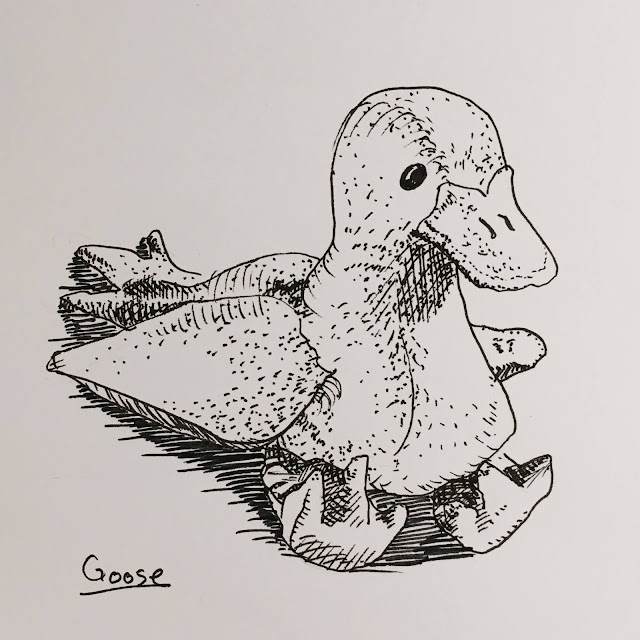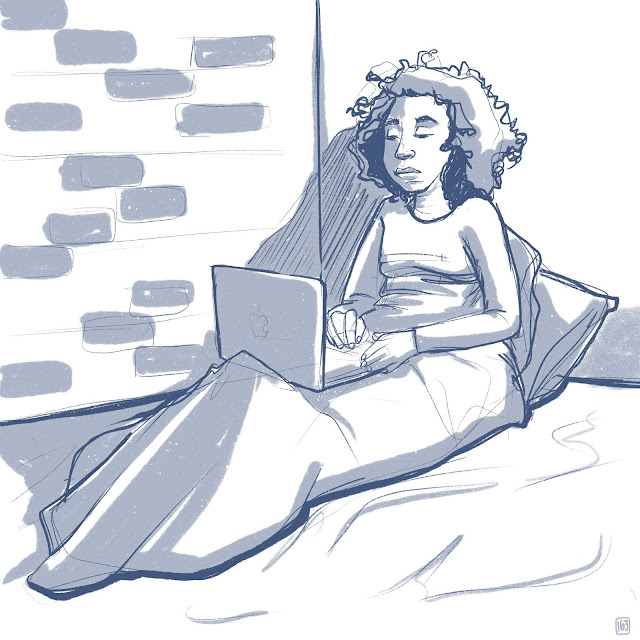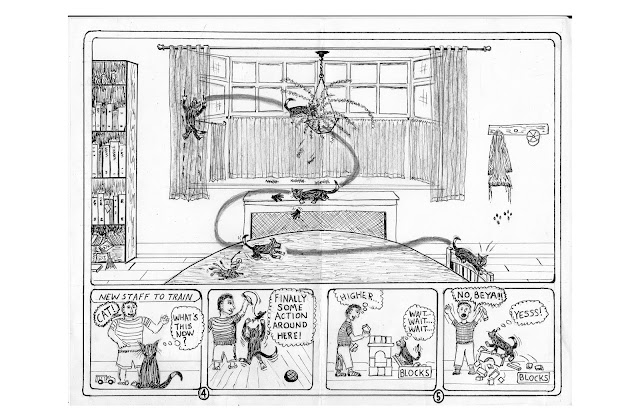"You make it look so easy," students often exclaim as I demonstrate some tweak to their work, a flipped curve or added stroke, that changes the whole look. I point out that there are jugglers who make what they do look easy, too.
Behind the tweaks lie governing principles one can learn. When a comic is illegible, confused, or dull, it usually turns out that the artist was lost in the weeds, distracted by some aspects of the problem to the exclusion of others.
Anybody can learn to make comics. You can probably teach most of it to yourself, as many do. But it's helpful to have a guide, someone to point your attention to problems you overlooked or weren't aware of.
Have a look at these examples of successful student work from my recent SVA online courses, Cartooning Basics, Thinking In Ink, and Figure Drawing for Cartoonists.
 |
| A hatching study of a plush goose doll by Jill Adams. Jill has many more ink studies on her Instagram. |
 |
| Much of the classwork is drawn from life, such as Sharon's ink line and halftone sketch above. Check out her new graphic memoir. |
 |
| The courses culminate in sequential stories, such as this beauty by Steven Wong. |
 |
| Lou Venech completed his very first comic in Cartooning Basics, the story of his unruly kitten. Here's the cover, center spread, and back page. The course surveys the entire process, from concept and writing through the printed booklet. |

To be continued? Let's make sure of it. The summer enrollment period will end soon. Spread the word please and
come cartoon with us!









No comments:
Post a Comment